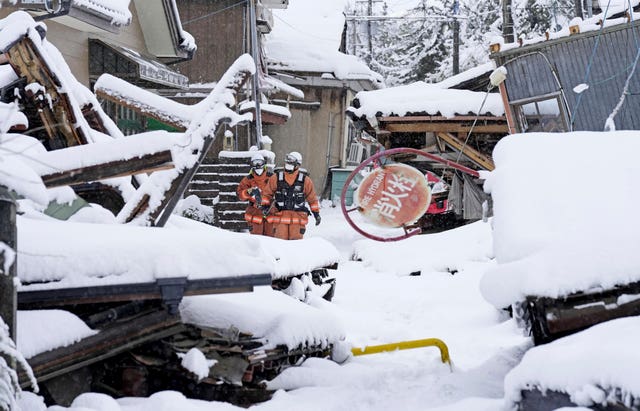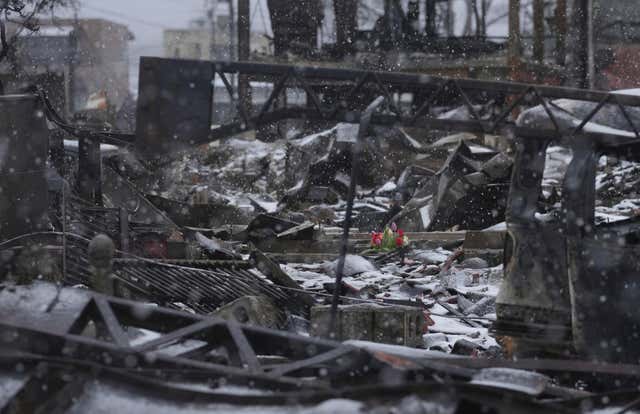
Rescue teams worked through snow to deliver aid and supplies to isolated hamlets in Japan on Monday.
Rescuers continue to work to save those isolated and trapped one week after a powerful earthquake hit the western part of the nation.
After the New Year’s Day 7.6 magnitude earthquake, 103 people were still unaccounted for, a slight decrease from the more than 200 reported earlier.
With chances for survival for those missing diminishing, the death toll sits at 161 people dead.
That number comprises 70 people in Wajima, 70 in Suzu, 11 in Anamizu, and the rest from smaller towns.

A total of 565 were also injured.
But, as emergency crews continue their attempts to aid survivors, heavy snowfall in Ishikawa Prefecture over the weekend and into the new week has hampered efforts and added to the sense of urgency.
Snow and rainfall raise the risk of mudslides and further damage, as snow collecting on roofs can flatten homes left barely standing.
Ishikawa officials say 1,390 homes were destroyed or severely damaged in the quake, with many of the houses in that western coastal region of the main island ageing and wooden.
Hundreds of aftershocks have followed, rattling the Noto Peninsula, where the quakes were centred.
As per Japanese media reports, firefighters and other disaster officials were trying to get to nine people believed to be buried under collapsed houses in Anamizu.
Some people have been living out of their cars after the quake, with 30,000 people evacuated to schools, auditoriums, and community facilities.
Long lines have formed at petrol stations, and food and water supplies are still short as locals struggle to survive.
A fire that raged for hours gutted a significant part of Wajima, and a tsunami swept through homes, sucking cars down into muddy waters.

Speaking to Jiji Press, Taiyo Matsushita said he walked three hours through the mud to reach a supermarket in Wajima city to buy food and other supplies for his family.
The home where he lives with his wife, four children, and about 20 nearby homes are among the more than a dozen communities cut off by landslides.
“We want everyone to know help isn’t coming to some places,” he said.
“We feel such an attachment to this community. But when I think about my children, it’s hard to imagine we can keep living here.”
Mikihito Kokon was one of the 30,000 evacuated.
He told Japanese media he was worried about what the snowfall might do to his home, which was still standing but a wreck after the earthquake.
“You don’t even know where to start or where the entrance is,” he said.
He added: “We’re all doing our best to cope, helping each other, bringing things from home and sharing them with everyone. That is how we are living right now.”


Comments: Our rules
We want our comments to be a lively and valuable part of our community - a place where readers can debate and engage with the most important local issues. The ability to comment on our stories is a privilege, not a right, however, and that privilege may be withdrawn if it is abused or misused.
Please report any comments that break our rules.
Read the rules here